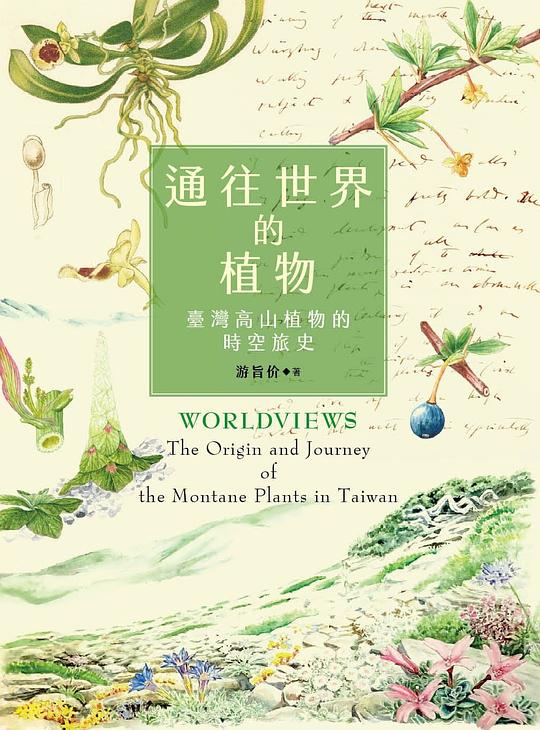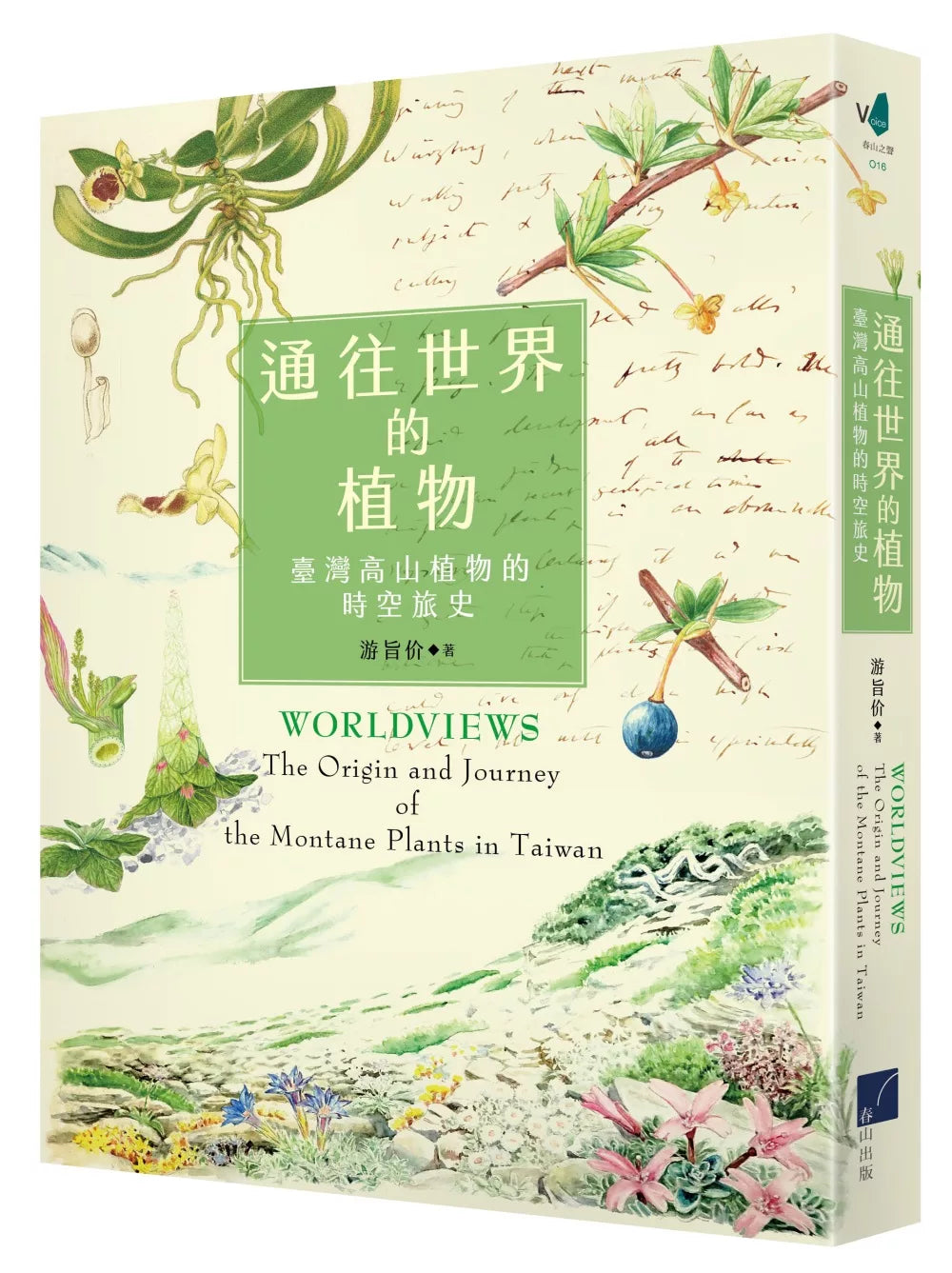1
/
of
2
Plants that lead to the world
Plants that lead to the world
Tour price
Regular price
$31.99 USD
Regular price
Sale price
$31.99 USD
Unit price
/
per
Low stock
Couldn't load pickup availability
About Book
About Book
Worldviews: The Origin and Journey of the Montane Plants in Taiwan
◎How do mountain incense from the Southern Hemisphere's alpine plants cross the equator and reach the central mountain range?◎A precious giant tree in East Asia, as famous as the California giant sequoia, is found in Taiwan!
Have you ever seen the Chinese ginseng, Taiwan's only endemic plant? And its sister plant lives halfway around the world in tropical America?
The first natural history of Taiwan's alpine plants
★Let Taiwan's alpine flora serve as your guide, uncovering the connection between Taiwan and the world for millions of years!
★Using the eyes of biogeography: ecology and evolution, we unfold the natural history of Taiwan's alpine plants. ★Breaking beyond the limits of islands and national borders, we explore the entire East Asian and even global geological history, deeply exploring the evolutionary web of life on a large scale.
"Formosa truly lives up to its name, the Pearl of the Orient. Its greatest beauty lies in its vibrant camphor oak forests and the giant cypress and towering Taiwania trees growing on its rugged mountains." — Ernest H. Wilson
Taiwan's mountains are an ark of biodiversity, a meeting place of plants, and a magical place. Through the ecological and historical lens of biogeography, this book features Taiwanese alpine plants as the protagonists, opening up connections between Taiwan and the world. Readers will experience the grand adventure of Taiwanese alpine plants over millions of years to reach the world.
Throughout Earth's history, alpine plants have entered the island at various geological stages. Although Taiwan's geomorphological history is only approximately six million years old, the natural history embedded in its native plants stretches back tens of millions of years. How have evolutionary forces shaped the survival and reproduction of alpine plants on Taiwan's more than 200 peaks exceeding 3,000 meters? Taiwan's mountains are the easternmost point of Himalayan alpine plants, the final destination for many northern temperate plants migrating southward, and, incidentally, a stopover for travelers from the Southern Hemisphere. Besides serving as a global stopover for these plant travelers, Taiwan's mountains have also nurtured numerous endemic species. How did these species become truly Taiwanese through the mountain-building movement?
The familiar red cypress, known to the Yamato people as the tallest tree in East Asia, is a world-renowned and precious species, on par with the giant sequoias of California. The thorny barberry, though not favored by mountaineers, is the most diverse alpine plant found on the summit of the 100 peaks, astounding international scholars with its thirteen unique varieties. In his 1911 book, Flora of Taiwan, Hayata Fumzo marveled at a mysterious herb, the mountain incense, originating from the Australian flora of the Southern Hemisphere. How does this endemic species in Taiwan lead us into Darwin's famous Abominable Mystery? Plants from around the world, gathered in Taiwan's high mountains, bear witness to the island's evolution and vividly preserve the memory of plants' journeys between plates and islands.
This book, with its grand vision, lays out the scientific principles and worldviews of history's most significant plants, organisms, geologists, and naturalists, closely integrating historical chance with science. Through the lens of Taiwan's alpine flora, the author offers a diverse interpretation of Earth's natural history. While humans have nationality by choice, plants have no nationality, and those who study plants know no borders. Many naturalists have visited Taiwan, believing they had landed on an isolated island, only to be surprised to discover the entire northern hemisphere's nature on that tiny island. In Taiwan, they encountered flowers and plants from their homeland and saw species they had imagined. By understanding the origins of alpine plants, we can transcend the limitations of islands and national borders and delve into the web of life through biological evolution, ultimately revealing a new perspective on life and a new perspective on the land.
Features of this book
Unique theme: The first evolutionary history story told with Taiwanese alpine plants as the protagonists
★ A novel perspective: Biogeography places biological distribution within the context of environment and history, opening up a cross-disciplinary perspective
★Broad academic scope: covering global plants, geology, phenology, ecology, and biological evolution
★ Combining science and humanity: In the rational natural science discussion, the author's real feelings in the front line of the field are interwoven, presenting a sense of déjà vu of natural history.
★ Exquisite and warm illustrations: Each chapter begins with a large ecological landscape map to show the spirit of nature. The text is also decorated with detailed hand-drawn maps and plant pictures to narrow the distance between people and plants and add warmth.
★Highlights everywhere, full of fun: In addition to the text, the annotations are rich in content, the box story is strong and interesting, and there are precious ancient literature and records, etc., reflecting the diverse and flexible reading interest.
Reviewers (in order of strokes)
Tsuyoshi Nakamura, Associate Professor, Botanical Garden, Northern Biosphere Field Science Center, Hokkaido University (Biogeography section of this book)
Li Jiancheng, Researcher at the Institute of Earth Sciences, Academia Sinica (Geology section of this book)
Li Pan, Associate Professor, Department of Life Sciences, Zhejiang University (Biogeography section of this book)
Zhao Jiandi, PhD, Department of Forestry, National Chung Hsing University (taxonomy section of this book)
Zhong Guofang, Associate Researcher and Director of the Research Museum, Center for Biodiversity Research, Academia Sinica | Adjunct Associate Professor, Department of Forest Environment and Resources, National Taiwan University (Biogeography section of this book)
Recommendation order (according to the order of articles)
Zhong Guofang, Associate Researcher and Director of the Research Museum, Center for Biodiversity Research, Academia Sinica | Adjunct Associate Professor, Department of Forest Environment and Resources, National Taiwan University; Tsuyoshi Nakamura, Associate Professor, Botanical Garden, Northern Biosphere Field Science Center, Hokkaido University; Guangji Hong, Assistant Professor, Department of Geography, Environmental Resources, National Taiwan University
Recommenders (arranged in order of strokes)
Nakamura Tsuyoshi, Associate Professor, Botanical Garden, Northern Biosphere Field Science Center, Hokkaido University; Gu Tingwei, Director, Takao Station Story Museum; Wu Yonghua, Taiwanese natural history researcher; Li Jiawei, Professor, Department of Life Sciences, National Tsing Hua University, Editor-in-Chief of the Taiwanese edition of Scientist; Li Jiancheng, Researcher, Institute of Earth Sciences, Academia Sinica; Ke Jinyuan, Environmental documentary filmmaker; Hong Guangji, Assistant Professor, Department of Geography, Environmental Resources, National Taiwan University; Cui Zuxi, Mountain exploration and travel writer; You Xia, renowned biology tutor; Liao Peijun, Professor, Department of Life Sciences, National Taiwan Normal University; Liu Kexiang, Writer and nature observer; Zhong Guofang, Associate Researcher, Center for Biodiversity Research, Academia Sinica, and Director of the Research Museum; Adjunct Associate Professor, Department of Forest Environment and Resources, National Taiwan University
Good reviews and recommendations
"To describe one's homeland with profound professional knowledge and grace requires a profound cultural background and understanding of nature, and in this book, the author clearly possesses both." -- Liu Kexiang, Nature Observer
"The author, through his humanistic approach, makes the study of plant classification and biogeography, part of the secondary school curriculum, engaging and captivating. This book allows readers to gain a deep understanding of biology through the fascinating plot. It is an excellent extracurricular reference for cultivating the scientific literacy of secondary school students!" - High school cram school teacher You Xia
Publication Date
Publication Date
2020-03-31
Publisher
Publisher
春山出版
Imprint
Imprint
Pages
Pages
320
ISBN
ISBN
9789869866255
share



